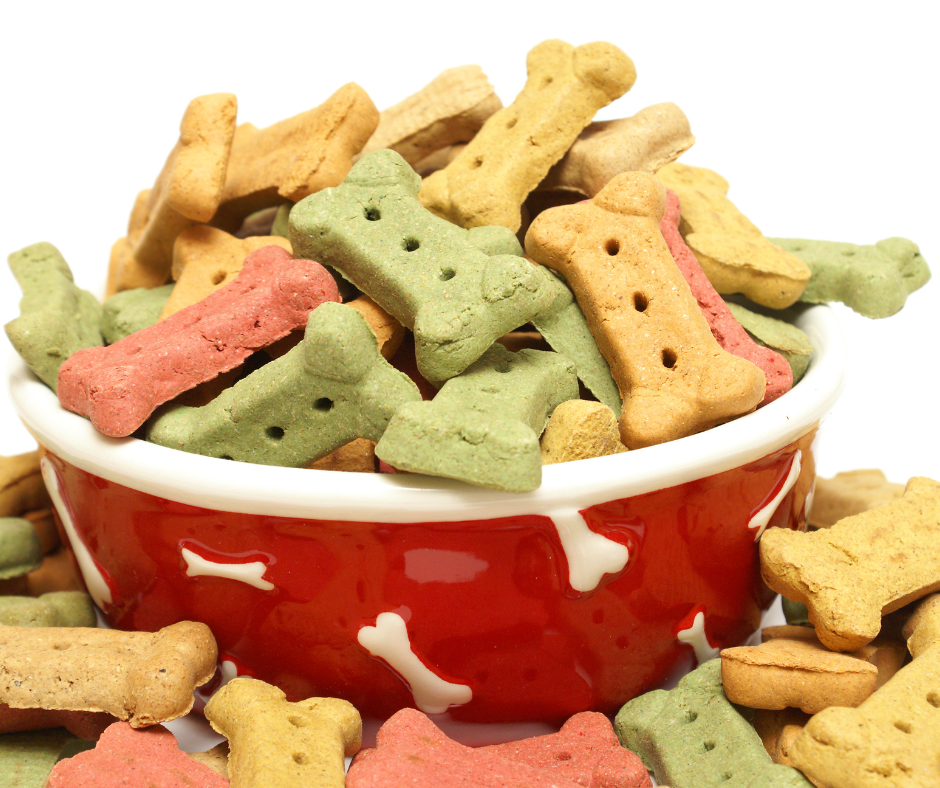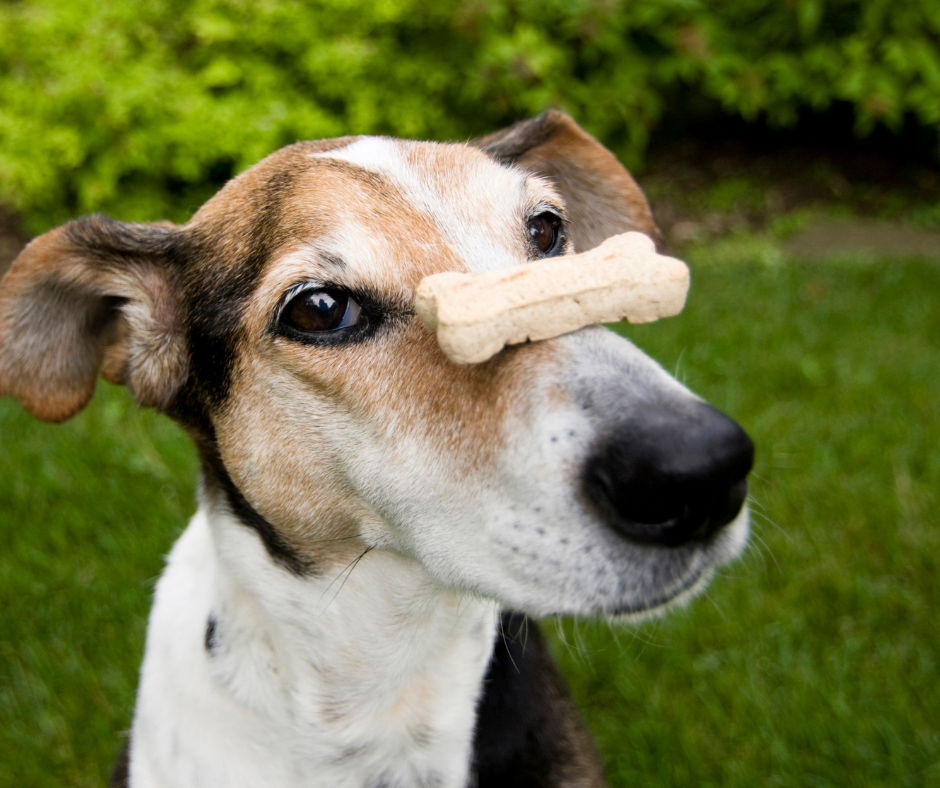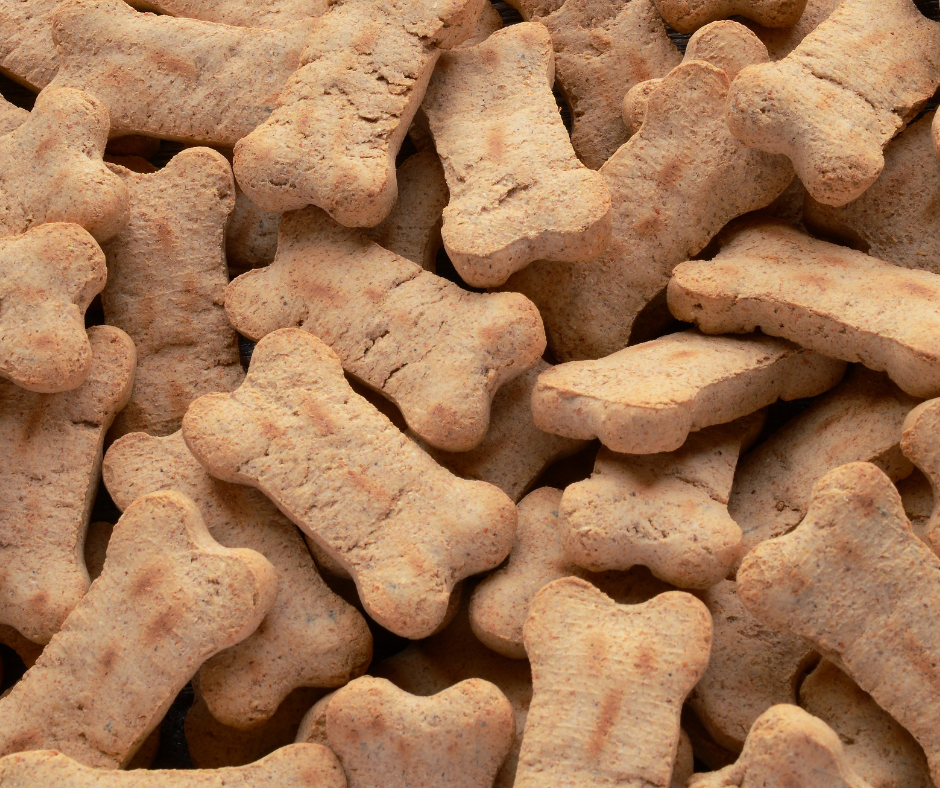Types Of Snacks On The Market, What’s Considered Healthy, And The Do’s & Don’ts Of Treat Giving
Every dog owner loves to spoil and/or reward their furry friend with treats. But, there are literally hundreds of different types of dog treats on the market, making it difficult and sometimes overwhelming trying to pick just the right one for your dog. That’s where ParaMount Pet Care has your back! This blog will cover everything you need to know about dog treats. We’ll look at the different types of dog treats, the various pros and cons, what ingredients to look for, what to avoid, and the best way to use and implement dog treats with your furry friend.
Different Types of Dog Treats
Generally speaking there are 8 different categories of dog treats on the market today. Each one has its upsides and downsides. Some types are healthier than others, but it’s really up to you and your dog(s) preference. To better compare and contrast these different types of treats we’re going to cover them one at a time.
1. Soft/Chewy:
These come in a wide variety of sizes, shapes, and flavors. Soft treats offer a pleasant taste and texture to your furry friend. Their soft texture allows them to easily be broken into smaller bite size pieces making them ideal for dog training purposes and good for dogs with missing or sensitive teeth. Their small size also makes them easy to carry, allowing you to reward your dog anytime and anyplace.
2. Crunchy:
Being one of the most common forms of dog treats, crunchy treats come in many forms. Biscuits, cookies, and bars are all considered crunchy dog treats and make great everyday rewards for your furry friend. It’s important to buy the appropriate size crunchy treats for your dog as some treats can be too big for your dog to chomp on and can become a choking hazard.
3. Dehydrated/Freeze-Dried:
Dehydrated dog treats are typically either dehydrated fruits and vegetables or jerky. And who doesn’t love jerky!? Jerky is essentially dehydrated meat and therefore 100% protein, making it a very healthy option for your dog’s diet. Dehydrated fruits/vegetables such as apples, sweet potatoes, and pumpkins are also very appealing options to dogs due to their unique flavor and texture. These types of treats are also great for training purposes and dogs with food sensitivities.
4. Dental Bones:
Not to be confused with actual animal bones or hides, dental treats are made of digestible materials such as corn starch, glycerin, or sweet potato. These treats are very hard, resembling animal bones or hides and require a great deal of chewing for your dog to consume them. These treats are believed to support good dental health as the excessive chewing needed to eat them helps control plaque. Although safer than real bones, it’s highly recommended to give these treats under supervision as they can still be a choking hazard. These treats make great distractions for your dog as it will take them a decent amount of time to fully consume.
5. Ears:
As the name suggests, these are literally the dehydrated ears of pigs, cows, lamb and possibly other various animals. While these are delicious and digestible treats for dogs, they are not considered healthy options. They are typically processed with chemicals and are very fatty making them less than ideal options as treats for your dog.
6. Rawhide:
One of the most popular, yet controversial treats currently on the market, rawhide is made from animal hide and is often treated and processed with various harsh chemicals. These chemicals can be very unhealthy for your dog and lead to health complications. But, some veterinarian recommended rawhides are naturally treated and can be good for teeth cleaning. That being said, still use caution and supervision. Rawhide expands when wet. If your dog swallows a piece, that can either get lodged somewhere in their digestive tract or expand in their stomach without fully digesting, causing some serious and sometimes fatal issues.
7. Animal Bones/Hooves/Horns:
These treats are very affordable and can keep your dog busy but be careful of what kind of bone you give your dog as some can splinter and cause internal damage. We recommend trying animal bone alternatives such as Earth Animal No-Hide bones, Nothin’-to-Hide bones, Bully Sticks, or Smartbones. If you’re looking for a great horn that does not splinter, we recommend trying Buffalo horns. They last a while and come with rave reviews regarding their inability to splinter!
8. Homemade:
For all you die-hard pet lovers out there, one of the best (but also most expensive and time consuming) options are homemade treats. This includes homemade jerky/dehydrated fruits and veggies, to frozen broth cubes, even homemade biscuits and cookies are a valid option. Just be cautious of what ingredients you use to make these treats as some can be poisonous. If you’re unsure what ingredients to use, refer to our previous blog post on “People Food & Pets.” Also use caution as to the amount of calories/fats you’re putting into these treats to avoid your dog from becoming overweight and/or developing health problems.
Ingredients To Avoid
Similar to our snacks, every box or bag of treats has a nutrition label. Listed in descending order, the first ingredient will be the most abundant ingredient. You typically want to avoid fillers on the ingredient list especially in the first three ingredients. The fillers you want to avoid include things like corn gluten meal, meat by-products, syrups/molasses, soybean meal, carrageenan, by-product meal, MSG, Sodium Hexametaphosphate, and artificial sweeteners. These ingredients provide no nutritional value and are considered unnatural and won’t properly digest. Avoid sweeteners, chemical preservatives, and artificial additives and colors too.

Ingredients To Look For
When it comes to things you do want in your dog’s treats, keep the ingredient list short and with natural ingredients. The shorter the list of ingredients, the less chance there will be any unnecessary preservatives, chemicals, or additives. Look for more natural preservatives such as vitamin C and E as your dog will be able to digest and process these better than the artificial alternatives. As for ingredients, you want to keep an eye out for high quality whole food ingredients such as whole meats, grains, fruits, vegetables and omega fatty acids. These are all ingredients that are essential to your dog’s diet and that can be more easily digested. In short, be sure to keep the ingredients in your dog’s treats as simple and natural as possible.
Best Methods To Use Dog Treats
Treats should mostly be used to reinforce good behavior. If your dog does something good like going potty when let outside or following basic commands, offer them a treat to remind them they did something good. Most dogs will remember receiving a treat after doing said command and continue to do so in hopes of receiving more treats. Many first time dog owners will often give their dogs treats to stop bad behavior such as barking, jumping, biting, etc. Don’t do this! Giving your dog a treat in hopes to stop bad behavior will only reinforce the idea (from the dog’s point of view) that they will receive a treat after misbehaving. Treats should be used sparingly and only as incentives for good behavior. Your dog’s primary source of nutrition should come from their food. For a more comprehensive guide on how and when to give dog treats, check out cesarsway.com

Snacks for Days!
Treats are a wonderful resource to use when rewarding or training your dog. They come in a wide variety of types, sizes, and flavors. No matter how picky your dog may be, there’s bound to be a treat out there that will satisfy their taste buds. Not all dog treats are created equal, so it’s very important to always check the nutrition label and ingredients list. Every dog loves treats, but it’s up to us not to spoil them with treats. Too much of anything can be a bad thing. But, with the proper timing, training, and patience, dog treats can help discipline your dog and strengthen your bond with them through the power of a tasty snack.


0 Comments